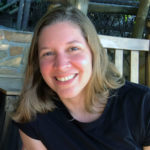Grow Your Art Practice with a BFA Degree
Art + Extended Media is a BFA degree program in studio art where you will explore all types of media. You’ll become as fluent creating with a computer as you are creating with your hands.
About Sage’s Studio Art Major
Our Art + Extended Media program emphasizes a strong studio practice. Following foundation year courses, you’ll receive a studio space. Art majors meet together in a studio seminar course where they refine their practice.
We believe that an art practice should be well-rounded, where students can answer conceptual challenges with many skills. Studio art majors take courses from the Graphic + Media Design and Interior + Spatial Design programs, making Art + Extended Media a unique BFA degree program, where physical and digital creating go hand-in-hand.
Faculty members exhibit their work nationally and internationally, and contribute to cultural institutions in Troy and Albany, New York, and surrounding areas.
Studio Art Program Facilities
You’ll explore clay, metal and wood in our sculpture facilities. In printmaking, you’ll create works through relief, etching and screenprinting processes. We also maintain a black and white darkroom that students experiment with as early as their first year. Our drawing and painting studios offer the space and light for realizing whatever challenge you take on.
You’ll have access to digital fabrication equipment like 3D printers, a laser cutter and vacuum former. Large format printers, Wacom Cintiq displays, scanners and audiovisual equipment are available through the Art + Design Technology Center.
Lost in Art is one of several student groups you can join. Lost in Art is an extension of the Art + Extended Media program and invites all Sage students to workshops, mural painting, exhibitions and other events. You may also serve on the editorial staff or publish your work in Vernacular, a student-run publication and campus tradition for more than 50 years.
Two on-campus galleries provide you with the chance to develop and curate shows, experiment with installations, and exhibit work.
And you’ll have plenty of opportunities to network with Russell Sage College’s entire Art + Design department and members of Albany and Troy’s creative communities through lectures, events and exhibitions at Opalka Gallery.
“Russell Sage College is a great place to explore the potential of your ideas …”
William Fillmore, MFA
Assistant Professor of 3D and Extended Media
Spotlights
Read more from BFA students, faculty and alumni.
“Funny enough, I started Russell Sage as a biology major,” said bio-turned-art-major Abner Velazquez. He explained that in high school, …
Madison Scisci ’20 says that when she enrolled in Russell Sage College’s BFA program in Art + Extended Media, she …
“There’s this quote that I found a while back in a fortune cookie,” said Tayron Lopez ’19, “‘When you act …
Melinda McDaniel believes in an idea she calls “design thinking” and it helps explain why she’s so passionate about teaching …
We’re often told first impressions mean a lot. Well, in Quill Harrison’s case, a good first impression determined where she …
Careers with a BFA Degree in Studio Art
Art majors get great jobs in community organizations, museums and galleries, educational institutions, communication agencies and design firms and other settings.
Recent graduates are working as a graphic designer at Audible, an art manager at Blizzard Entertainment video game company, as art teachers and in design, videography and photography roles at advertising and communications firms.
Graduate Studies with a BFA Degree
A Master of Fine Arts degree or Master of Arts in Teaching in Art Education is the next step for many studio art majors who want to continue their education.
Recent BFA graduates have been accepted to Sage’s MAT in Art Education program, to the University of Buffalo’s MFA program, and to graduate programs at the Maryland Institute College of Art.
Accreditation
Russell Sage College’s Visual Arts programs are accredited by the National Association of Schools of Art and Design (NASAD), 11250 Roger Bacon Drive, Suite 21, Reston, VA 20190. 703-437-0700.
Application Process
We’d like to meet you! Come visit our campuses, get to know our faculty and diverse student body, even sit in on a class or two.
First-year and transfer students can find information about application procedures, tuition, financial aid and scholarships via the links at the bottom of this page.
Art + Design Mission Statement
Russell Sage’s art and design programs, creative arts in therapy, and art history courses develop innovators of art and design with an understanding of visual culture, its relevance to society, and the ability to contribute as artist citizens. In this student-centered environment, students broaden their artistic vision through internships and the interdisciplinary opportunities offered at Russell Sage. Art and design students leave Sage with the confidence to influence their world through mastery in competence areas, creative vision, critical thinking and problem solving capabilities.
Sage’s art and design programs and art history courses will prepare students for current and emerging careers in the arts by:
- Developing curriculum that mirrors departmental and college core values and aligns with the institution’s strategic plan.
- Aligning and expanding the art and design disciplines to reflect the interdisciplinary nature of Russell Sage
- Designing innovative and immersive programs that offer connections to both the local and global communities through community projects, exhibitions, guest lectures, field trips, internships, clubs, and travel opportunities
- Establishing residency programs for visiting artists, designers and scholars that benefit both students and the community.
- Fortifying relationships with the surrounding community
- Fostering environmentally sensitive and socially conscious citizens.
This will be accomplished through:
- Assessing art and design and art history curricula and its viability, using learning assessment methodologies such as faculty-guided peer review of student work, accreditation, portfolio reviews, testing, research methods and papers. In addition, art faculty will conduct yearly reviews for all students to assess programmatic progress and to continually strengthen teaching.
- Interacting with Sage colleagues, programs and institutes across disciplines and the campuses to facilitate relationships necessary to strengthening interdisciplinary activity and courses.
- Facilitating outreach to community partners to expand student opportunities for service learning.
- Collaborating with the Sage community to combine resources for visiting artists and scholars who will benefit the Sage community in its mission.
- Creating meaning by emphasizing communication modes and literacy through listening, writing, speaking, self-reflection and proficiency assessments. In part, this will be accomplished with the addition of writing and speaking components into every studio class to work in concert with art history courses and core goals of humanities education.
- Encouraging non-art majors to minor in an art discipline and for art majors to minor outside of the department to foster relationships across the disciplines exposing students to a greater variety of viewpoints.
- Maintaining personal faculty development in order to foster continued scholarship and professional practice in the fields of art, design, creative arts in therapy, and art history.
- Modeling behaviors consistent with our value system of empathy for our fellow citizens and stewardship of the world around us.
The art and design unit, like all college constituencies, regularly aligns our plans with the Sage mission. We complete annual reviews which articulate goals for assessment, instruments to be used, how information will be gathered, and identify how assessment results will be used with program-level assessment grids. Curricular decisions are guided by and informed by the mission, and course content is designed to support each of the institutional learning outcomes.



